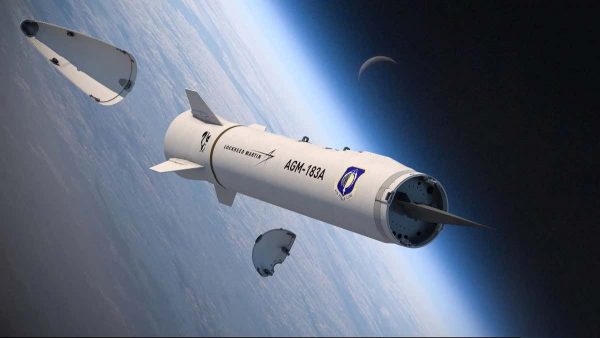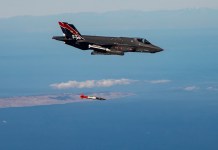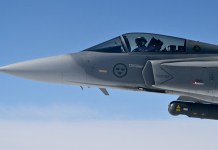The latest revelation by the Pentagon that a Navy-designed hypersonic missile failed in its latest test has raised concerns in the US military circles given the arch-rivals Russian and China are making rapid strides in their own hypersonic programs.
As NATO-Russia Tensions Soar, US-Led Military Alliance Sees Gaping Holes In Its Air Defense Capabilities
“On Oct. 21, the Department of Defense conducted a data collection experiment from the Pacific Spaceport Complex-Alaska, Kodiak, AK [Alaska], to inform the department’s hypersonic technology development,” the Pentagon spokesperson said in a statement. “The test did not occur as planned due to a failure of the booster stack.”
The spokesperson said the booster stack used in the test was not part of the hypersonic program and is not related to the Navy-designed Common Hypersonic Glide Body, which the DoD successfully tested on March 20, 2020.
Defense officials have initiated a review to determine the cause of the booster system failure on October 21, the spokesperson said. The United States is confident it is on track to fielding offensive hypersonic capabilities in the early 2020s and this flight test is part of an effort to develop this technology, the spokesperson added.

Earlier on October 21, the US Navy said it had conducted a weapons test with the Army that demonstrated advanced hypersonic technologies and capabilities. The collaboration was focused on advancing work on the Navy’s Conventional Prompt Strike, a non-nuclear hypersonic weapons system, and the Army’s Long Range Hypersonic Weapon offensive strike capability.
Series Of Failed Tests
In July, the US Air Force had said its second test of the AGM-183A Air-launched Rapid Response Weapon (ARRW) hypersonic missile failed after the rocket motor did not ignite. The first test in April was unsuccessful as well due to an issue with the first booster vehicle flight test.
The US military is developing at least three types of hypersonic weapons – the Navy’s Conventional Prompt Strike, the Army’s Long Range Hypersonic Weapon, and the ARRW for the Air Force, The EurAsian Times had reported.
The War Zone’s Joseph Trevithick wrote that the evaluation was for a missile design meant for the US Army’s ‘Dark Eagle’ project and the US Navy’s Intermediate-Range Continental Prompt Strike Weapon System (IRCPS).
The report said that there is uncertainty whether this was the case. The report made this assessment on the basis of the test site used. It speculates that an entirely different hypersonic payload and booster stack may have been used during the evaluation attempt. This development follows an official statement about three successful launches in relation to the joint army-navy weapon.

The test’s failure was first reported by Reuters. The evaluation was reportedly carried out from the Pacific Spaceport Complex, Alaska nestled on Kodiak Island. Despite being widely reported the exact nature of events remains vague.
An American official told ABC News’s Luis Martinez that a “booster rocket with a hypersonic glide attached failed to launch today during a launch test at Kodiak, Alaska.” Following this, questions were raised about the proceedings of the launch.
US’ Hypersonic Capabilities
Both the army and navy have been collaborating on hypersonic weapons since 2017. The two services intend to fire the missile from ground-based launchers, ships, and submarines. Aviation Week’s Steven Trimble reported that this failed test was the prototype’s maiden launch attempt.
Both the military branches had carried out prior tests of the vehicle using other boosters. They expressed their desire to commence flight testing the system for the fiscal year 2022 which began on October 1, 2021. The US Army had stated earlier this year that some of the tests would be held at Kodiak.
The Pentagon had confirmed to Reuters earlier that three successful tests of advanced hypersonic technology capabilities and prototype systems concerning both the Dark Eagle and IRCPS systems in an environment realistically simulating operational environments.
The boost-glide vehicle that both branches use for their common missile has been designed by Sandia National Lab. They led the tests at NASA’s Wallops Flight Facility in Virginia.

There were prior indications of a missile test being held at Kodiak. For instance, hazard warnings for mariners and civilian pilots. The notices highlighted that Kodiak was the point of launch. The facility had been used for missile testing in the past as well.
The impact area was either within or in the proximity of the Ronald Reagan Ballistic Missile Defense Test Site. The test range is managed by the US Army and is situated at Kwajalein Atoll in the Republic of the Marshall Islands.
The reported impact area is around 4,000 miles from Kodiak (reported launch point). However, prior statements by the US Army indicate that Dark Eagle’s operational range exceeds 1,725 miles.
It may be poignant to note that China has reportedly tested a new fractional orbital bombard weapon system leveraging a hypersonic glide vehicle.
China, Russia Making Rapid Strides
Reports of this development came out on October 17. A subsequent report indicated that China conducted two tests of this system earlier this year. It had previously been reported that only one such test had been carried out.
These developments saw US President, Joe Biden, express his concern over China’s success with hypersonic technology. This coupled with the recent US Military testing failure and a loss of face following the Afghanistan fiasco sees the US playing catch up in what has been described as the second cold war.
A recent analysis by the UK-based newspaper, The Telegraph, painted an ominous picture for the US in a potential third world war with the US lagging behind old rival Russia and new adversary China in the hypersonic domain. Only time will tell which global power will emerge the victor in this hypersonic race.
- Aritra Banerjee is a defense journalist who has worked in both online and print media. He has laid an emphasis on issues related to military human resources, tactical psychology, military-media relations, professional military education, and combat fitness. He can be reached on email: aritrareporter@gmail.com.
- Follow EurAsian Times on Google News




